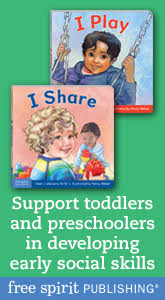ExchangeEveryDay Past Issues
 << Previous Issue
| View Past Issues | | Next Issue >>
<< Previous Issue
| View Past Issues | | Next Issue >> -John Erskine
“There’s no consensus on the best ways to group children under age two and one-half,” wrote Jim Greenman in the popular book, Caring Spaces, Learning Places (newly revised by Mike Lindstrom). “Travel from state to state, or country to country, and you will discover all sorts of grouping arrangements for children under three. They range from separating children every six months… to multi-age rooms for children six-weeks to two or even three-years-old….
While there are few ‘best ways’ or ‘set in stone’ requirements, there are certainly undesirable choices that lead to low quality, including the invisible cost to the child of drastic change every six-months.”
Are you in a program that serves infants and toddlers? If so, you are invited to leave a comment explaining how you’ve chosen to group infants and toddlers, and why. Thank you!
25% off this title for a limited time |






Comments (1)
Displaying 1 CommentLeafSpring School
Glen Allen, VA, United States
At LeafSpring School we provide individual classrooms for children under sixteen months, children 16 months to 23 months, 24 months to two and a half years, and 2.5 years to age 3. The key to our success, however, is two-fold. One, we only move children once a year in September, and during their year in the classroom, they have a primary caregiver who stays with them, building a strong bond of support for both the child and the family. This system then allows the children who have grown close over the year, to move together to the next age-appropriate classroom the following September. Longterm, children grow together over the years and this eases the annual transition to a new room because their friends will move with them.
In addition to providing strong support and minimal movement for the children and families, our approach also supports teachers. They have a whole year with the same children and can really get to know them and individualize their teaching because they have the time to learn each child's needs and development. Teachers also have the option to move up with their children to the next classroom. As an administrator, former teacher, and parent, I have yet to see anything else that supports everyone involved in a more supportive way.
Post a Comment